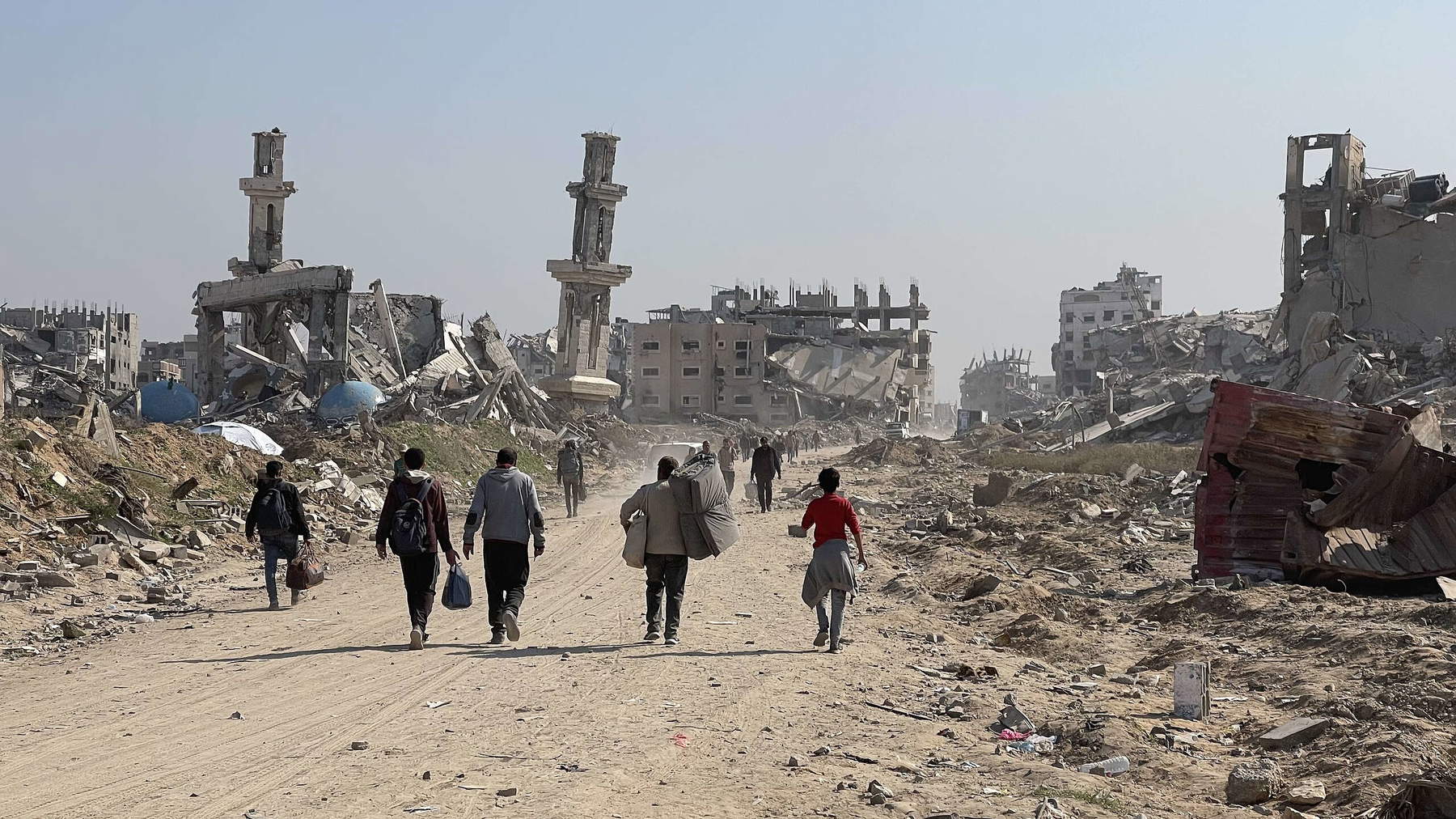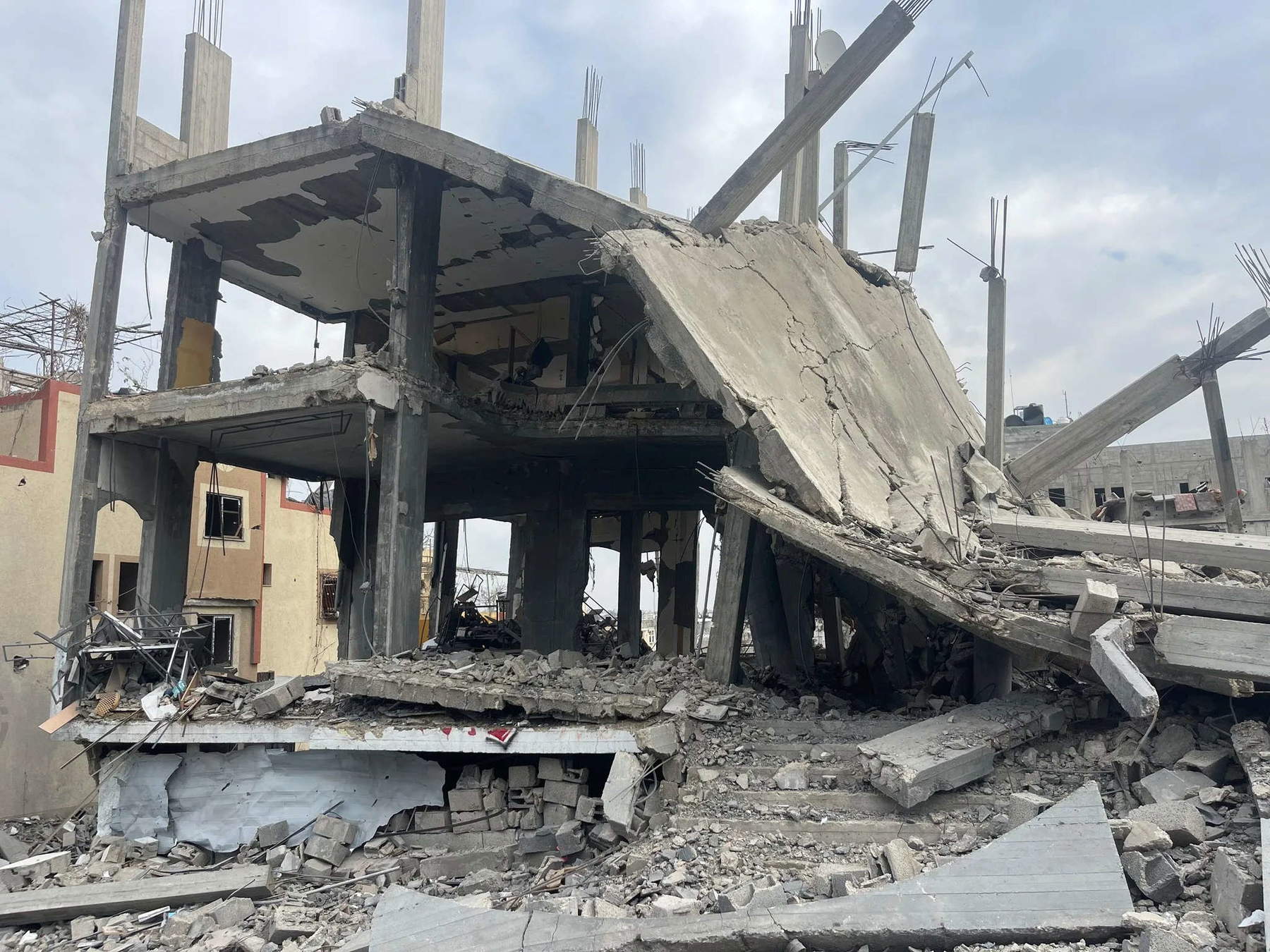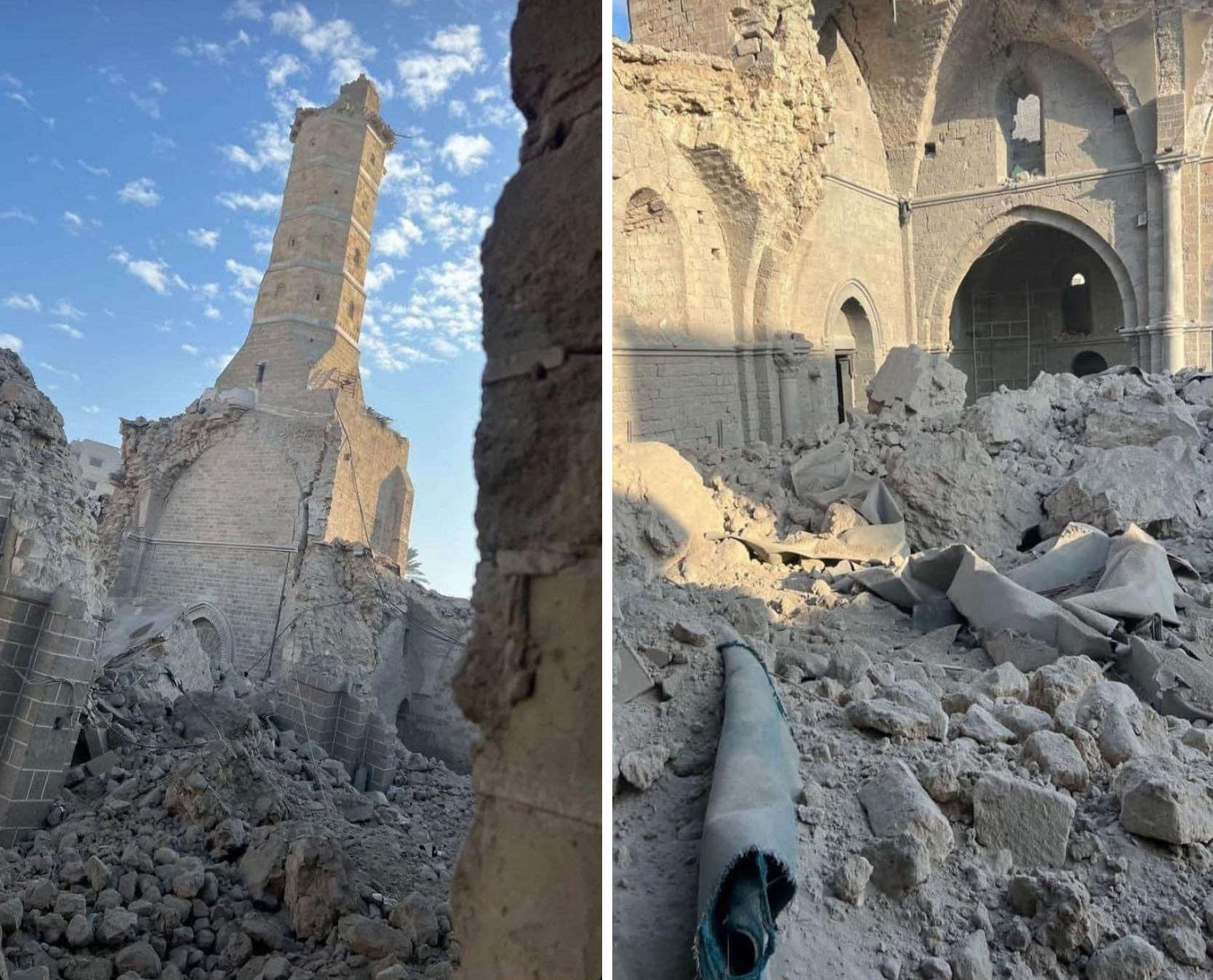Not only is the tremendous massacre of civilians taking place in Gaza that is there for all to see. There is also a devastation that is little talked about, since human lives are the priority, but which continues in parallel: it is that of Gaza’s cultural heritage. Last week, the organization PEN America, which has been raising awareness about freedom of expression and human rights since 1922, compiled a report, titled All that is lost, documenting all the damage Gaza’s cultural heritage is suffering. The analysis was conducted through a review of evidence and interviews with Palestinian cultural workers and focuses on the catastrophic existential threat to Palestinian culture in the Gaza Strip. This crisis is exacerbated by the fact that artists, writers and cultural workers are being forced into exile or are being killed, while their cultural heritage is being systematically demolished by Israeli army military attacks. And for Palestinians, who have experienced decades of war, repression, occupation and displacement, culture is essential to express and safeguard their history.
The extent of the destruction is staggering, and probably underestimated, given the continuation of hostilities even in the months after the initial assessments were written. According to the report, the Israeli military allegedly destroyed or damaged a significant number of sites of great religious and cultural importance. An analysis conducted by the Endangered Archaeology in the Middle East and North Africa (EAMENA) project in collaboration with the Centre for Cultural Heritage Preservation (CCHP) mapped and verified 316 historic sites and buildings, concluding that as many as 226 of these suffered damage. Initial efforts for emergency preservation alone were estimated at about $36.4 million (€31.2 million), while full reconstruction could take up to eight years, with a projected cost of about $304 million (€261 million).

The military campaign has dealt a devastating blow to higher education and intellectual life in Gaza. The report concludes that all high schools and universities in Gaza have been partially or totally destroyed. Education in this context plays a particularly vital role, since it provides opportunities for advancement, contact with the outside world, and spaces for learning in an area under severe restrictions on movement and access.
Affected institutions include the near total devastation of the Islamic University of Gaza, which alone housed a library with 130,000 volumes. The Israel Defense Forces (IDF) said the university served as Hamas’ operational, military and political center, also used for weapons development and production. However, PEN America raised concerns that the extent of the damage indicates a lack of distinction between specific military and civilian targets, or damage disproportionate to the military advantage gained. The human loss to the academic community has been equally catastrophic, with at least 105 academics killed by mid-2024. Notable casualties include the rector of Islamic University, Sofyan Taya, a renowned physicist and mathematician, who was killed in an attack in Jabalia along with his family.
Al-Azhar University also suffered extensive damage, including airstrikes and controlled demolitions. According to soldiers’ testimonies, even a mosque inside the Al-Azhar campus was reportedly bombed. Similarly,Al-Israa University, the last remaining relatively intact institution of higher education, was substantially destroyed in January 2024 through controlled demolitions after being occupied by Israeli forces for 70 days. The university also housed a national museum containing more than 3,000 rare archaeological artifacts. Ahmed Alhussaina, vice president of financial and administrative affairs at Al-Israa University, expressed concern that such widespread destruction is a deliberate act aimed at erasing the memory and archaeological value of Palestinian culture. The concept of “scholasticide” was raised by UN experts in relation to the 80 percent of schools and universities damaged or destroyed, suggesting an alleged deliberate effort to dismantle the entire Palestinian educational system.
In addition to university buildings, the report highlights the destruction of at least 11 libraries and eight publishing houses and printing houses. The Gaza Public Library, established in 1999 with World Bank funds and containing 10,000 books in Arabic, English and French, was completely destroyed. The Gaza City Central Archives, which held some 110,000 historical documents, photos and maps dating back more than 150 years, were also completely obliterated by air strikes.
A particularly heartfelt loss for the intellectual community is the destruction of the Edward Said Public Library in Beit Lahia, Gaza’s first English-language library, founded by poet and scholar Mosab Abu Toha. The destruction of the library building was confirmed by eyewitnesses in January 2025, after a cease-fire. Abu Toha himself, who lost the nearly completed draft of his novel and his entire personal library after his house was burned to the ground, expressed grief over the loss of “all dreams” burned by the Gaza campaign. Still, the Samir Mansour Library, a three-story cultural landmark, was severely damaged in October 2023, having only recently been rebuilt following damage sustained in an earlier attack in 2021.

The destruction did not spare places of worship. The Omari Grand Mosque, Gaza’s oldest and largest religious building, whose origins date back to the 7th century (on a 5th-century Byzantine structure), was largely destroyed in December 2023, after its minaret was previously damaged. This mosque was a key cultural and social hub. Its library, dating back to the 13th century, contained a significant collection of rare books and manuscripts. The IDF claimed that the mosque was used by Hamas fighters and hid the entrance to a tunnel, but these claims could not be independently verified. Cultural heritage expert Akram Lilja expressed the opinion that the mosque was hit several times not because of military activities, but because of the strong spiritual and social bond the people of Gaza had for it.
A Bellingcat survey documented that at least 100 mosques were damaged or destroyed during the conflict. Some of them were demolished through controlled detonations. Some IDF soldiers claimed that every house, mosque and school had been used for terrorist purposes. Churches in Gaza were also damaged. St. Porphyry Greek Orthodox Church, the oldest active church in Gaza dating back to the 12th century, was hit on Oct. 19, 2023. The attack killed at least 18 people who had sought refuge there. The attacks on the church and its institutions were condemned by the Orthodox Patriarchate of Jerusalem as a war crime. The Holy Family Catholic Church complex was also hit several times.
Among the historical sites of non-religious significance destroyed was theHammam al-Samra, an Ottoman-era Turkish bathhouse more than 750 years old, which was completely razed to the ground by air strikes in December 2023. This building, restored in 2022, was an important tourist attraction and cultural heritage site. Qasr al-Pasha, a 13th-century fort used in Ottoman times and later converted into a museum by the Palestinian Ministry of Tourism, was destroyed by airstrikes in December 2023. The fort housed hundreds of unique ancient objects and sarcophagi.
PEN America’s Report also documents the destruction of the Rashad al-Shawwa Cultural Center and the damage to the Al-Qarara Cultural Museum, which houses 3,500 archaeological, historical and folkloric artifacts. Satellite images indicate that the 1,500-year-old Byzantine mosaics discovered in 2022 near Bureij, considered among Gaza’s greatest archaeological treasures, have been severely damaged due to military activities in the surrounding area, likely related to the expansion of the Israeli “buffer zone.”

The destruction of cultural heritage is compounded by reports of looting and intentional destruction of movable cultural property. The report identified at least three cases of arson of books and two cases of reported looting of archaeological artifacts. Some videos showed Israeli soldiers intent on burning Korans in mosques and books in a university library. However, the IDF opened an investigation into these incidents, calling them “serious” and inconsistent with its values.
Regarding looting, the Al-Israa University museum was looted before being demolished. Similarly, Al-Mathaf Museum and Hotel, which housed a private collection of archaeological artifacts collected by Jawdat al-Khoudary, reported missing items and fire damage after being under Israeli control for months. In January 2024, Birzeit University reported on social media that 3,000 artifacts from its affiliated national museum were allegedly stolen by Israeli military forces, before the museum was bombed to cover up the alleged crime.
PEN America claims that attacks on civilian infrastructure, including cultural heritage, have been either indiscriminate or directly targeted. Such actions, whether intentional or reckless, violate international laws, particularly the 1954 Hague Convention for the Protection of Cultural Property in the Event of Armed Conflict, and potentially constitute war crimes and crimes against humanity. According to the International Criminal Court’s (ICC) policy on Cultural Heritage, crimes affecting cultural heritage “may in themselves constitute crimes against humanity” and may provide evidence of such crimes, suggesting that the civilian population was the primary target. Although cultural destruction is not explicitly an act required to prove genocide, it has been cited in some cases as evidence of genocidal intent. The United Nations Office for the Prevention of Genocide also views the destruction of property of religious and cultural significance as a potential indicator of genocidal intent.
The ongoing cultural destruction is also seen by PEN America as an expression of a dangerous narrative: that Gaza is devoid of history, culture or anything worth preserving. In the event, the eradication of Gaza’s identity would represent an extraordinary violation of Palestinians’ human rights and a denial of Gaza’s historical and cultural contribution to the world. Palestinian artists and writers interviewed stressed that culture is a vital means of resistance and expression of their identity.
PEN America called on the Israeli government to immediately cease its attacks on Palestinian cultural heritage and to comply with its international obligations. The organization also urges the international community to investigate the cultural destruction as potential evidence of war crimes, crimes against humanity and genocidal intent.
 |
| Gaza, the silent massacre: a report lists destroyed cultural heritage |
Warning: the translation into English of the original Italian article was created using automatic tools. We undertake to review all articles, but we do not guarantee the total absence of inaccuracies in the translation due to the program. You can find the original by clicking on the ITA button. If you find any mistake,please contact us.